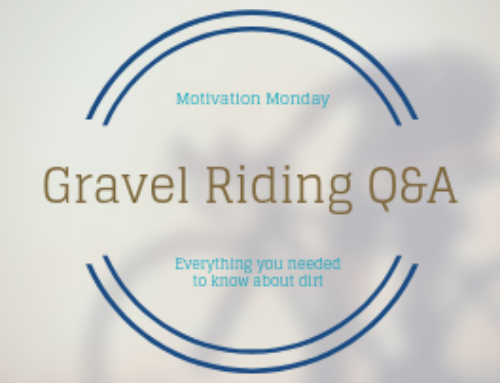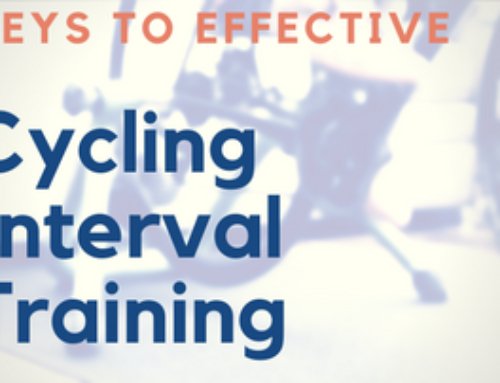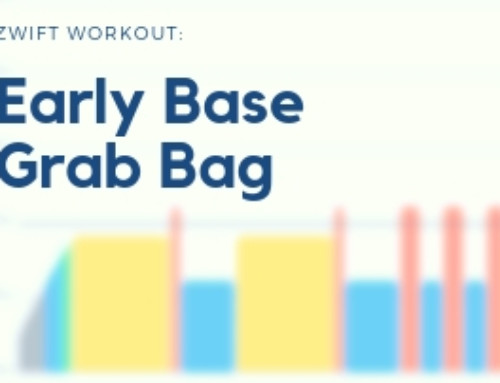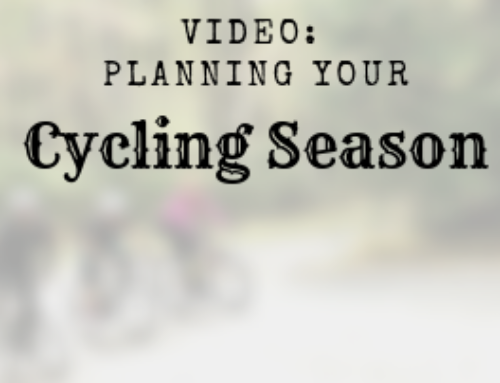In cycling, sprinting is more than just “pedal really hard a bunch of times.” If you've ever watched a professional sprint, you may realize that there's a certain absolute beauty in the type of activity they excel at. While they may be boring on TV, field sprints are perhaps the hardest parts of any race. Yes, a mountaintop finish requires power to weight ratio, the ability to suffer and some amount of tactical prowess, but sprinting well is a combination of massive tactical brainpower as well as leg power. Cycling sprint training is the bridge between getting strong and actually knowing how to execute a proper sprint out on the road.
Today, we'll talk about building leg power, neuromuscular fitness and technique and finesse that you'll need to succeed. You'll learn that a sprinter needs more than the ability to go fast. I'll explain how cycling sprint training should be broken down into the composite parts so that you can effectively train all parts of the system together. If you ignore one part of the equation, you may wonder why you're not getting faster, you may wonder why others are beating you, and you might even end up with an injury.
Click through to the show notes and make your cycling sprint training more effective. Don't forget to check out our podcast show sponsor Stages Cycling: any purchases through this link will contribute a few dollars to supporting the show. You can also rate the podcast on iTunes, share this post and download my free Sprint Training Tune Up plan!
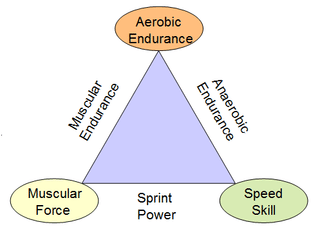 The components of cycling sprint training
The components of cycling sprint training
Cycling sprint training is a combination of two basic building blocks of fitness (muscular force and speed skill) as you can see from the image of Joe Friel's triangle to the right. If you recall, I've talked about rotating the triangle 120 degrees to the left so that muscular endurance is on the bottom. This still means that sprint power is part of the build up between speed skills and muscular force, but it's now a paradigm of your build period rather than a base of the pyramid.
With force and speed (really, neuromuscular coordination and efficiency) skills being the primary factors that determine your sprint power output, take a look at how to effectively train each of them:
Force work
- Force work is designed to create adaptations that increase neuromuscular recruitment and overall force production
- Specific force work leads to strengthening of muscle fibers and motor units to provide more force as the situation demands it
- Adaptations include hypertrophy of fast and slow twitch muscle fibers, increased glycogen storage, increase in mitochondrial density of slow twitch muscle fibers, increased storage of creatine phosphate, improved muscular endurance and muscular fatigue resistance
- Multiple ways to train: gym work and on-bike work
- Gym work should consist of functional, full kinetic chain exercises such as squats, lunges, box jumps, olympic lifts, sled pushes, etc.
- See more cycling strength training info in Strength Training For Cyclists Part 1 and Strength Training for Cyclists Part 2
- On bike work consists of very slow cadence, very high-intensity work, especially up hills
- Force intervals are typically done above threshold, around 50-60 RPM, shoot for 120% FTP or higher, 2-5 minutes duration. (I sometimes start people out with 1 minute drills to ensure there are no issues with joint pain or development of tendonitis.)
- On bike force work has the benefit of helping to improve pedal stroke dynamics and synchronize the neuromuscular system to fire in sync, which provides more power overall
- Force work can be combined with a hill rollover technique in order to get extra technique work in your training program
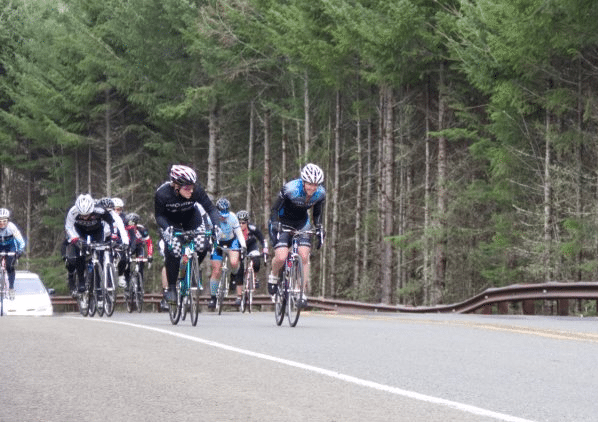 Neuromuscular coordination and efficiency work
Neuromuscular coordination and efficiency work
- Cadence work is typically designed and prescribed to improve neuromuscular coupling between the nervous system and the muscles.
- This kind of work solidifies the firing patterns that allow for high-level efficiency and coordination between muscle fibers during the twitch/contraction phase.
- Concurrently, a higher level of coordination and efficiency allow for higher cadences overall
- Power = force x pedal velocity or cadence, so increasing cadence = increasing power
- Intervals consist of training such as superspins, spinups, cadence ladders and single leg drills
- Supplemented with form sprints (more on this later) or other standing drills that help to improve form, stability and capacity to increase cadence out of the saddle.
With an idea of how these two components of sprint power mesh together, let's push forward and look at some of the interval work that is typically found in a sprint-heavy program.
Varieties of Track Work
- Sprint workouts typically contain things like track starts, rolling sprints, etc
- Sprint work starts with easy and form related work
- Varieties of the main intervals form the basis of the sprint workout (differing distances, starting speeds, etc.)
- Supplemented by force work on the bike (big gear, low cadence), superspins, single leg drills, spinups, may blend in VO2 or Race Winner type work.
Standing start intervals
- Track starts – starting from (almost) a dead stop, designed to get up to speed as quickly as possible
- Start these in an easy gear to get the concept down and build neuromuscular capability
- Progress to big gear intervals to build strength and power output
- Teaches how to get “on top” of a gear and spin it up
Rolling sprint intervals
- Rolling sprints are designed to make you apply sprinting prowess from speed
- Start with moderate speed and perform form sprints in easier gears, focusing on neuromuscular capability
- Progress to big gear intervals to build strength, power output and develop acceleration/snap
Sprinting from a group
- Once you've built neuromuscular capacity, force production capacity and snap, you need to learn how to apply it
- The best groups to work with are safe groups – teammates, friends etc
- Make sure these intervals are expected: discuss before the ride
- Learn how to sprint in a group: letting gap open, accelerate into and through the slipstream to slingshot out
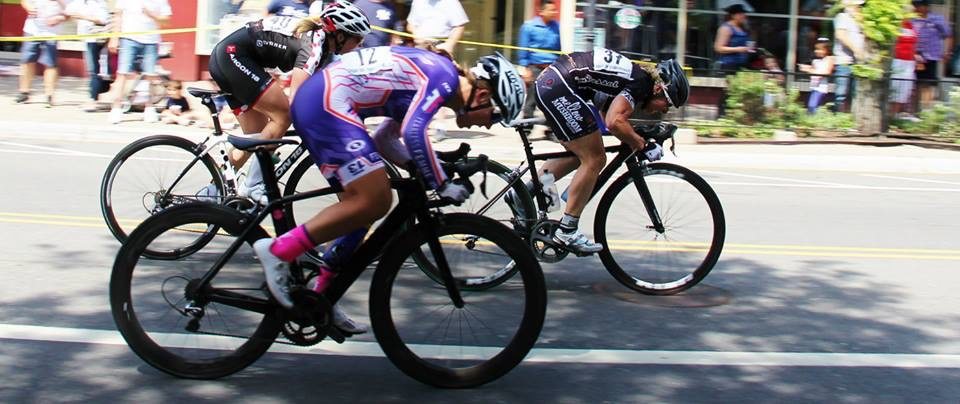
Sprinting from a group is the last (and probably the most important) part of your cycling sprint training. Image courtesy Argon18racing.com.
Now that you're set to go with the theory and how to train, here's a few tips to keep in mind regarding your sprinting form. Remember, good form takes time to perfect. Some basic techniques to work on are as follows:
- Always sprint in the drops while elbows are bent, never from the hoods.
- Keep your head up and eyes forward. Don't look at the front wheel.
- Start the sprint with your strongest leg coming up and over the top of the pedaling circle.
- Use a gear where you can accelerate to 110+ rpm (remember force*cadence = power.)
- Keep the front wheel pointed forward, but let your bike rock back and forth underneath you.
- As you push down with your left foot, pull up with your left hand and let the bike rock to the right. This loads up the bike and your body to produce additional power through the serape effect.
- Keep your weight centered over the cranks. Leaning too far forward over the stem will under-weight the back wheel and it will skip around during the sprint.
Sprint workout sheet download:
Subscribe to the Tailwind Coaching Newsletter to unlock your free content and get my exclusive coaching tips, fitness advice and exclusive discounts in your inbox!
So are you ready to learn how to win? If you're struggling to meet your goals, you can pick from a ton of great training options in my downloadable training plan store, including my new Unbreakable Core Stability module and my upcoming Track Module which will help you sprint like a Ferrari. You can also get a ton of great training tips FOR FREE, so sign up for the Tailwind Coaching Newsletter to get my best coaching tips delivered to your inbox, along with a free bonus training plan, updates, and exclusive discounts like the Unbreakable Core Stability discount!
If you enjoyed this episode, please do me a favor and head over to the Tailwind Coaching Podcast on iTunes and rate it 5 stars. A positive review helps the podcast move up the ratings, reach more listeners, and help more people get stronger, faster and fitter. Don't forget to post any questions to the Tailwind Coaching Facebook page, on the Tailwind Coaching forums, contact me via email or leave a comment below. Don't forget to support our sponsors and help to keep this podcast free, help me to get this information to more people and help grow the cycling community.



